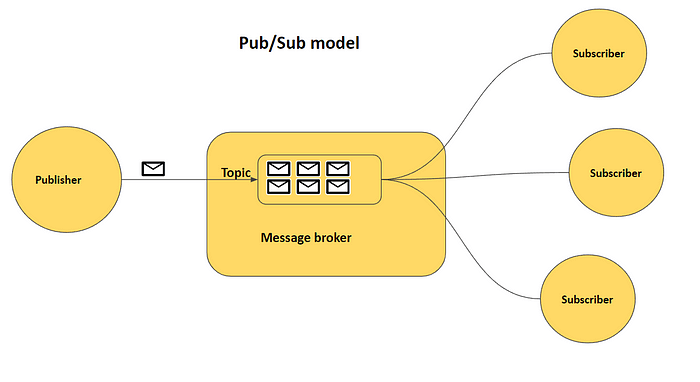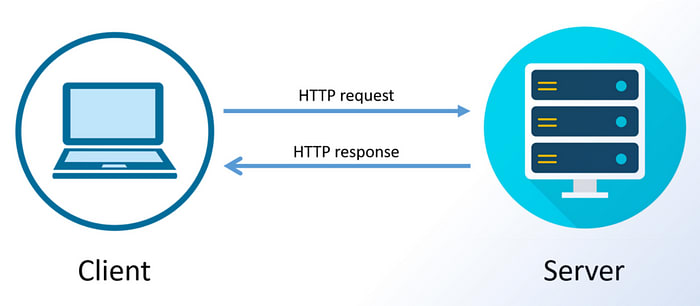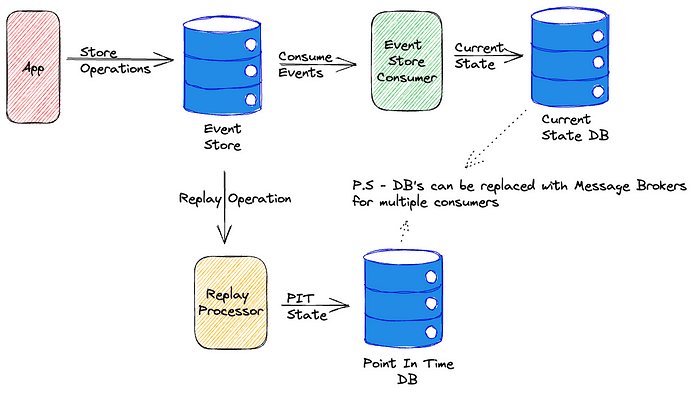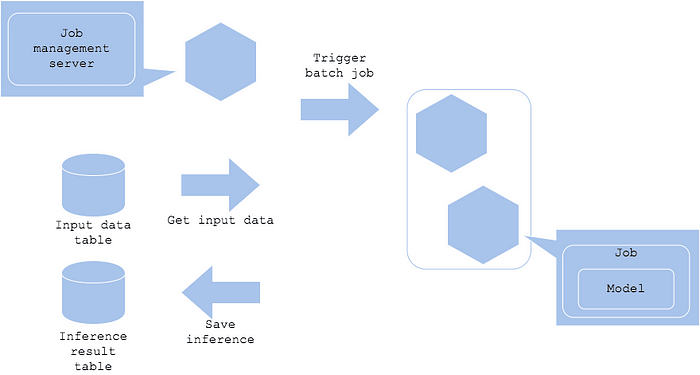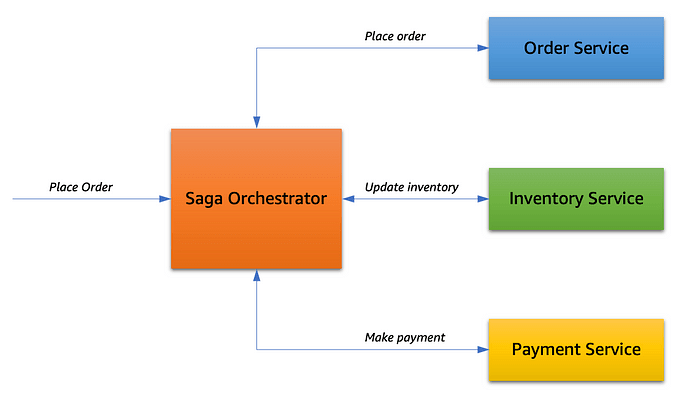9 Software Architecture Patterns for Distributed Systems Dev Community
9 Software Architecture Patterns for Distributed Systems - DEV Community #
Excerpt #
These are the essential Software architectural patterns for data and communication flow.
Disclosure: This post includes affiliate links; I may receive compensation if you purchase products or services from the different links provided in this article.
image_credit - ByteByteGo
Hello friends, in modern software development, distributed systems are very popular but architects and developers face the challenge of designing systems that efficiently manage data and facilitate seamless communication between various components.
Architectural patterns provide proven solutions to common problems encountered in distributed systems, ensuring reliability, scalability, and maintainability.
Among these patterns, some patterns stand out as fundamental for managing data and communication flow effectively, which we will see in this article.
These are also important topic for System design interviews and knowledge of these pattern goes a long way in solving System design problem and impressing your interviewer.
Apart from preparing common System design questions like API Gateway vs load balancer, Forward Proxy vs Reverse Proxy as well common System Design problem , it make sense to know about these patterns as well.
Let’s find out more about these patterns to understand their principles and applications.
By the way, if you are preparing for System design interviews and want to learn System Design in depth then you can also checkout sites like ByteByteGo, Design Guru, Exponent, Educative, Codemia.io and Udemy which have many great System design courses
Also a solid knowledge of various Architecture patterns like Peer to Peer Pattern, API Gateway goes a long way in designing systems which which can withstand test of time on production, on that note, here is a nice diagram from DesignGuru.io on Microservices architecture:
9 Best Architectural Patterns for Distributed Systems #
In the past, you have learned about essential Microservice design patterns like Event Sourcing, SAGA, Database Per Microservices, API Gateway, Circuit-Breakerand also shared best practices to design Microservices , now its time to see the brief overview of common architecture patterns for Data communication.
1. Peer-to-Peer (P2P) Pattern #
The Peer-to-Peer pattern fosters direct communication between two or more components without the need for a central coordinator.
In this decentralized model, each node in the network can act as both a client and a server, enabling efficient resource sharing and collaboration.
P2P architectures are commonly used in file sharing systems, decentralized applications (DApps), and blockchain networks, where resilience and scalability are paramount.
Here is how P2P architecture looks like:
2. API Gateway Pattern #
An API Gateway serves as a unified entry point for client requests to access backend services within an application.
By consolidating multiple APIs into a single interface, it simplifies client-server interactions and enforces security, authentication, and rate limiting policies.
API Gateways are essential components in microservices architectures, enabling service discovery, load balancing, and protocol translation while abstracting the complexities of backend systems.
Here is how it looks:
If you like to watch, here is another great video from ByteByteGo which explains API Gateway
3. Pub-Sub (Publish-Subscribe) #
The Pub-Sub pattern decouples message producers (publishers) from consumers (subscribers) through a message broker or event bus like Kafka, Solace, RabbitMQ, or ActiveMQ.
Publishers broadcast messages to predefined topics or channels, while subscribers express interest in specific topics and receive relevant messages asynchronously.
Pub-Sub architectures facilitate loose coupling, scalability, and fault tolerance, making them ideal for real-time messaging systems, event-driven microservices, and IoT platforms.
Here is how Pub-sub pattern looks like:
4. Request-Response Pattern #
The Request-Response pattern represents the fundamental interaction model in distributed systems, where a client sends a request to a server and awaits a corresponding response.
This synchronous communication paradigm is prevalent in web applications, RESTful APIs, and RPC (Remote Procedure Call) frameworks.
Request-Response interactions ensure predictable behavior and enable error handling, making them suitable for transactional workflows and user-facing interfaces.
Here is how Request-Response model looks like in action:
5. Event Sourcing Pattern #
Event Sourcing is a distributed system pattern for persisting the state of an application as a sequence of immutable events.
Instead of storing current state directly, events representing state transitions are stored and replayed to reconstruct the application state when needed.
Event Sourcing enables auditability, temporal querying, and replayability, making it well-suited for financial systems, collaborative editing tools, and domain-driven designs where historical data is crucial.
Here is how a Event Sourcing pattern looks like:
And, if you like to watch, here is a nice video on Event Sourcing which is worth watching:
6. ETL (Extract, Transform, Load) Pattern #
ETL is a data integration pattern used to extract data from multiple sources, transform it into a standardized format, and load it into a destination database or data warehouse.
This pattern is essential for data migration, synchronization, and consolidation tasks in business intelligence, data analytics, and data warehousing projects.
ETL pipelines automate data workflows, handle data quality issues, and support batch processing of large datasets.
Here is how ETL looks lin action:
7. Batching Pattern #
Batching involves accumulating data over a period or until a certain threshold is reached before processing it as a single unit.
By aggregating multiple operations into larger batches, it reduces overhead and improves efficiency in data processing pipelines.
Batching is commonly employed in data ingestion, ETL processes, and distributed computing frameworks to optimize resource utilization and minimize latency.
Here is how a Batching pattern looks like:
9. Streaming Processing Pattern #
Streaming Processing enables the continuous ingestion, processing, and analysis of data streams in real-time. Unlike batch processing, which operates on static datasets, streaming systems handle infinite data streams with low latency and high throughput.
Streaming architectures support event-driven processing, complex event processing (CEP), and real-time analytics applications in domains such as finance, IoT, and cybersecurity.
Here is a nice diagram from Hazlecast which shows Stream Processing in action:
10. Orchestration Pattern #
Orchestration involves a central coordinator (an orchestrator) managing the interactions between distributed components or services to execute a workflow or business process.
By coordinating task execution, handling exceptions, and enforcing dependencies, orchestration ensures the orderly execution of complex workflows spanning multiple systems.
Orchestration engines are used in workflow automation, business process management (BPM), and microservices orchestration to streamline operations and improve agility.
Here is how it looks by using Saga Orchestrator Pattern
And, here is a nice diagram from ByteByteGowhich explains all these architecture styles in a more visual way
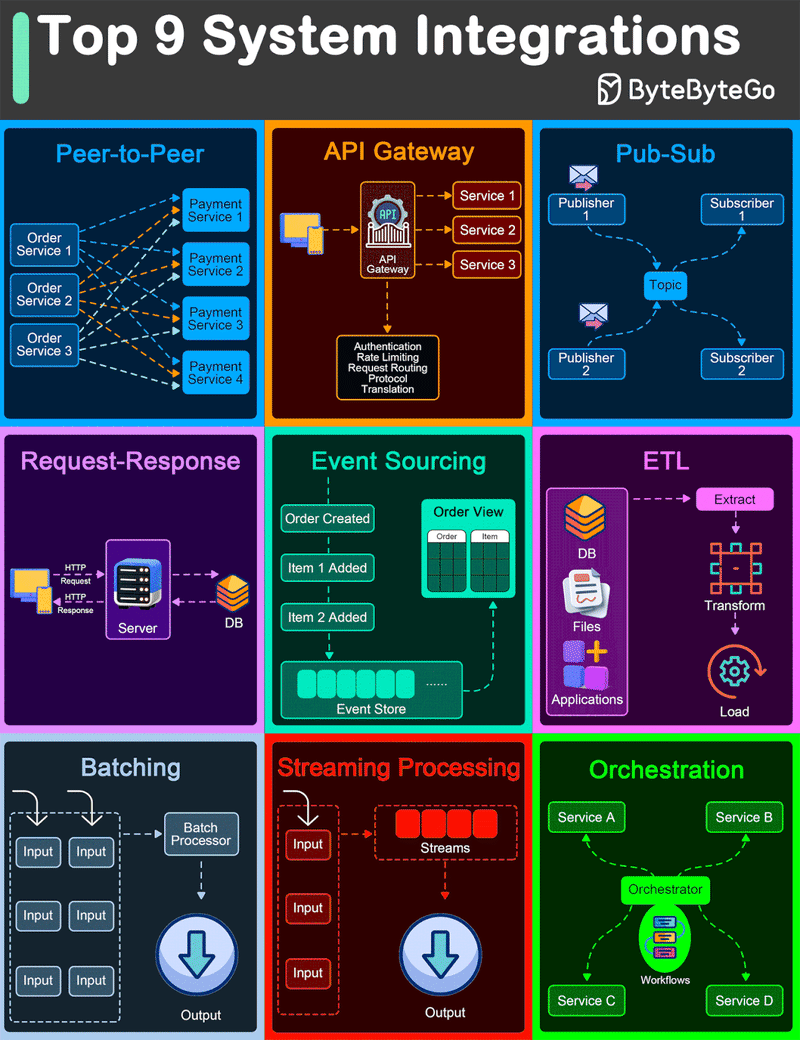
Best System Design Interviews Resources #
And, here are curated list of best system design books, online courses, and practice websites which you can check to better prepare for System design interviews. Most of these courses also answer questions I have shared here.
DesignGuru’s Grokking System Design Course: An interactive learning platform with hands-on exercises and real-world scenarios to strengthen your system design skills.
Codemia.io : This is another great platform to practice System design problems for interviews. It got more than 120+ System design problems, many of them are free and also a proper structure to solve them.
“System Design Interview” by Alex Xu: This book provides an in-depth exploration of system design concepts, strategies, and interview preparation tips.
“Designing Data-Intensive Applications” by Martin Kleppmann: A comprehensive guide that covers the principles and practices for designing scalable and reliable systems.
LeetCode System Design Tag: LeetCode is a popular platform for technical interview preparation. The System Design tag on LeetCode includes a variety of questions to practice.
“System Design Primer” on GitHub: A curated list of resources, including articles, books, and videos, to help you prepare for system design interviews.
Educative’s System Design Course: An interactive learning platform with hands-on exercises and real-world scenarios to strengthen your system design skills.
High Scalability Blog: A blog that features articles and case studies on the architecture of high-traffic websites and scalable systems.
YouTube Channels: Check out channels like “Gaurav Sen” and “Tech Dummies” for insightful videos on system design concepts and interview preparation.
ByteByteGo: A live book and course by Alex Xu for System design interview preparation. It contains all the content of System Design Interview book volume 1 and 2 and will be updated with volume 3 which is coming soon.
Exponent: A specialized site for interview prep especially for MAANG companies like Amazon and Google, They also have a great system design course and many other material which can help you crack FAANG interviews.
image_credit - ByteByteGo
You should also combine theoretical knowledge with practical application by working on real-world projects and participating in mock interviews. Continuous practice and learning will undoubtedly enhance your proficiency in system design interviews.
That’s all about 9 essential Software architecture patterns. Most of these patterns also applicable for distributed systems and they are also quite important for system design interviews.
In short, the effective management of data and communication flow is critical for building robust and scalable distributed systems.
Architectural patterns such as Peer-to-Peer, API Gateway, Pub-Sub, Request-Response, Event Sourcing, ETL, Batching, Streaming Processing, and Orchestration offer valuable solutions to address diverse challenges in system design and implementation.
By understanding these software architecture and distributed system patterns and their respective strengths and trade-offs, architects and developers can make informed decisions to design systems that meet the evolving needs of their applications and users.




